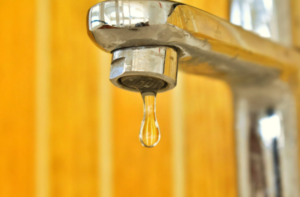Water softeners are an underrated filtration device. They do their job by allowing water to be filtered, regulating regeneration times, and replenishing salinity. You can learn more about it at thesmartconsumer.com website. Water softeners are great to protect us from getting hard water. However, they need regular maintenance. With simple measures, they can be more efficient and last longer. Now, let’s take a look at the regular maintenance of water softener.

How Salt Bridges Can Harm Your Water Softener
Salt bridges are the hard crust that forms on brine tanks and prevents salt from dissolving into the water. Resin beads cannot soften water in the absence of brine. High humidity, temperature fluctuations around the softener, or the wrong type of salt can cause bridging. Salt bridging can occur when the salt appears to be complete, but the salt deposit is still hard.
An even more severe problem than the first is salt agglomeration. This occurs when dissolved salt settles into a sludge at the bottom of brine tanks. This thick layer of salt blocks the flow of water and prevents its regeneration. The salt sludge is the reason for the appearance of a salt bridge in water tests. You can solve the problem by draining the water from the softener and removing the salt.
How to Choose the Best Salts for Your Water Softener
 There are three types of water softeners: solar, rock, and evaporative. Rock salt with a high content of insoluble minerals/impurities is the cheapest. This can lead to a sludge tank over time. It reduces the efficiency of the softener and leaves impurities in the water. Evaporation and solar salt formation from seawater create a salt that dissolves faster than rock salt. It is available in crystals and granules. The combination of extraction and evaporation results in evaporated salt, which is the best choice.
There are three types of water softeners: solar, rock, and evaporative. Rock salt with a high content of insoluble minerals/impurities is the cheapest. This can lead to a sludge tank over time. It reduces the efficiency of the softener and leaves impurities in the water. Evaporation and solar salt formation from seawater create a salt that dissolves faster than rock salt. It is available in crystals and granules. The combination of extraction and evaporation results in evaporated salt, which is the best choice.
At 99.99% sodium chloride, it is the purest type of salt. It’s best to use high-purity salts that leave less residue in storage tanks. This makes them less prone to salt bridge formation and salt contamination and reduces the need for maintenance. High-quality salts can eliminate salt-bridge problems, as can salt in granular form.
How to Clean the Resin Beads
Resin beads are usually filled with salt, but it’s a good idea to clean the resin bed once a month with a descaling cleaner to keep it in perfect condition. A descaler that has been used for a long time can become ineffective due to the buildup of contaminants such as iron, heavy metals, and sludge. This can be remedied by adding the recommended amount of water softener to the brine and then manually regenerating it to reduce the ineffective amount of resin. During the normal water softening cycle, the detergent is released. This keeps the resin clean and able to absorb maximum calcium and magnesium throughout its life.

